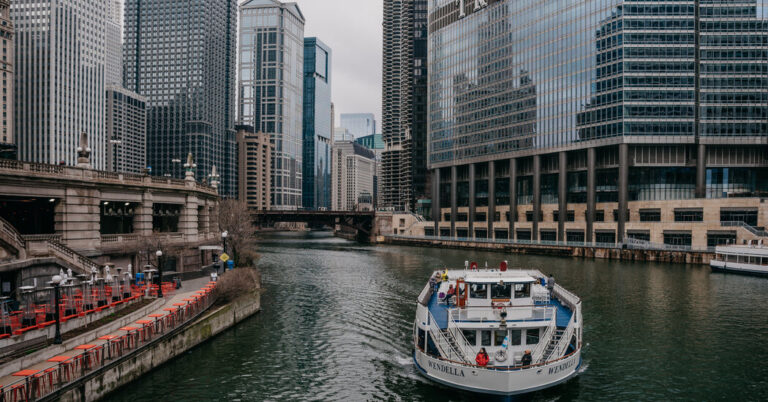A Surprising Climate Find – The New York Times
We humans have settled in all sorts of precarious environments: parched deserts, barren tundra, high mountains. None are precarious in quite the same way as atolls, the tiny, low-lying islands that dot the tropics. As the planet warms and the oceans rise, atoll nations like the Maldives, the Marshall Islands and Tuvalu have seemed doomed to vanish, like the mythical Atlantis, into watery oblivion.
Of late, though, scientists have begun telling a surprising new story about these islands. By comparing mid-20th century aerial photos with recent satellite images, they’ve been able to see how the islands have evolved over time. What they found is startling: Even though sea levels have risen, many islands haven’t shrunk. Most, in fact, have been stable. Some have even grown.
One study that rounded up scientists’ data on 709 islands across the Pacific and Indian Oceans showed that nearly 89 percent either had increased in area or hadn’t changed much in recent decades. Only 11 percent had contracted.
To understand why, I spent time this past spring with a team of researchers in the Maldives as they collected data on two key pieces of the puzzle: ocean currents and sand.
Currents and waves can erode sandy shorelines, of course. But they can also bring fresh sand ashore from the surrounding coral reefs, where the remains of corals, algae, crustaceans and other organisms are constantly being crushed into new sediment. (Another source of sediment? Colorful parrotfish, which munch on coral and churn out white sand from their digestive tracts.)
By examining how these interrelated and complex processes affected one particular island — Dhigulaabadhoo, an uninhabited curlicue of land a few miles north of the Equator — the scientists hope to better predict how other islands will change.
The next century
Though the research suggests that atolls aren’t about to wash away entirely, it hardly means they have nothing to worry about. Global warming is putting coral reefs under severe strain. If, say, the ice sheets melted faster than expected, then sea-level rise could accelerate sharply.
Even so, scientists say, the revelation that atoll islands can adjust naturally to rising seas means the people who live on them have an opportunity to figure out how to cope with their changing environment. It means they have other options besides the most drastic one: abandoning their homelands altogether.
“I’m confident that there’ll be islands in the Maldives” 50 or 100 years from now, one of the researchers on the team, Paul Kench, told me while we were on Dhigulaabadhoo. “They’re not going to look like these islands; they’re going to be different. But there will be land here. To me, that’s the challenge: How do you coexist with the change that’s coming?”
The Maldives needs to cultivate and recruit more scientific experts who can help guide the nation’s efforts to adapt, said Ali Shareef, the government’s special envoy for climate change. Without them, it’s hard to build infrastructure while minimizing harm to reefs, or to design towns that are resilient to flooding.
Money is an issue, too. “If we have access to the technology and finance, I think we can save the Maldives. It is not all doomsday,” Shauna Aminath, a former environment minister, told me. “The problem is, we don’t have access to finance and technology.”
If we humans can find a way to keep living and flourishing on atolls, it will bode well for our ability to continue doing so all across our warming planet. As Jon Barnett, a geographer at the University of Melbourne, put it: “If we can solve climate-change adaptation for atolls — ‘solve’ is the wrong word — then we can do it anywhere.”
THE LATEST NEWS
Supreme Court
Presidential Debate
Turkey leg and beef tongue: The Times asked readers to share their favorite New York City sandwiches. Read some of their picks.
Lives Lived: George Floyd’s murder moved Tom Prasada-Rao, a contemporary folk veteran, to write a song. His “$20 Bill” — the police arrested Floyd for buying a pack of cigarettes with what might have been a counterfeit bill — became an online sensation. Prasada-Rao died at 66.
SPORTS
Before a four-day visit to Norway, Ceylan Yeğinsu, a Times travel reporter, did away with her usual obsessive pre-vacation research and put her trip in the hands of three A.I. assistants (none of which, she writes, mentioned saunas or salmon). Ceylan combined their recommendations, and the result was a holiday that went beyond the predictable list of sites.
More on culture
-
Alec Baldwin is about to have his day in court. The road to his manslaughter trial has been a long and strange one.
-
A new book by Emily Nussbaum, a New Yorker staff writer, explores the origins of reality TV with “an exacting eye for detail,” our critic writes. Read the review.
-
Los Angeles designated Marilyn Monroe’s house a historic landmark, preventing a demolition project that neighbors supported.
THE MORNING RECOMMENDS …
Check out our Latest News and Follow us at Facebook
Original Source







